- Home
- Blog
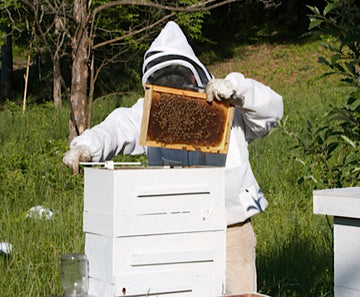
Elbow Room (in the hive)
Bees are extremely busy in the early Spring and Summer! You want to make sure you bees have enough room in the hive and are kept busy. Make sure that you have enough supers for honey storage. If needed, move some of the undrawn frames in a space or two so the bees can draw comb there. If you have an older hive, you might want to swap out some of the older, pollen-filled frames for new ones. This will help keep the bees busy, increase space in the hive, and improve circulation. If bees don’t have enough room in the hive, they will...
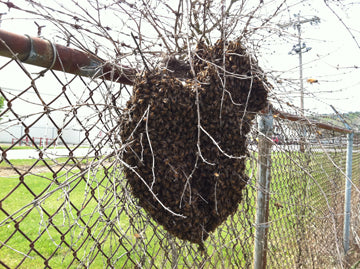
Stop the Swarm!
We blogged earlier about catching a swarm. This is a great way to start a new hive. But if you alrady have a hive, you want to be sure to prevent your bees from swarming! Although swarming can occur at any time, May tends to be the prime time for swarming. There are two main reasons for swarming: congestion and poor ventilations. Make extra room for your bees before they need it! You can do this by reversing your hive bodies and adding supers. Ventilate! Make sure you inner cover’s ventilation notch is open. You can also prop up your...
What is capped honey?
The investment of time, money, sweat, stings, and tears -- all of these things are easily forgotten once the honey starts to flow. After all, isn’t that what it’s all about....the yummy, yummy, honey?!?!In the South, beekeepers can begin removing capped honey after June 15. But, why does it have to be capped? And what, exactly, does “capped” mean?“Capped” honey is when the bees cover their honey with wax, much like putting a lid on it. This occurs only when the nectar is ripe. As you know, nectar is what bees turn in to honey. Bees turn nectar into honey...
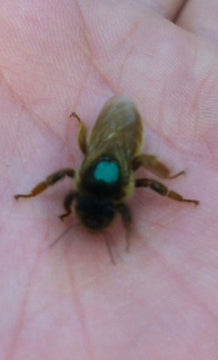
All Hail the Queen! Part 2
The Queen mates with drones outside of the hive, as mating occurs in flight. A young Queen store up to six million sperm from multiple drones in her spermatheca. She will selectively release sperm for the remaining two to seven years of her life. Sometimes, a Queen who has had a limited time to mate will become a “drone layer.” This usually signals the death of the colony, because the workers have no fertilized larvae from which to raise worker bees or a replacement Queen.As the Queen ages, her pheromone output diminishes. As the Queen becomes old or ill, she...
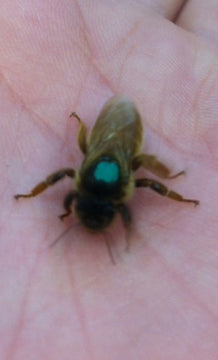
All Hail the Queen! Part 1
You know, in the bee world, it’s just really all about the Queen. If there is no Queen, there is no hive. After all, she lays all the eggs! If she’s sick or weak, the hive will suffer. If this “Queen bee” is so important...what do you need to know?The Queen bee is a fully-fertile female that only produces eggs. Laying eggs is her job -- her only job. But what makes a Queen a Queen? Royal jelly. Queens grow from larvae that is fed a special food called “royal jelly.” According to Wikipedia, royal jelly is secreted from the...
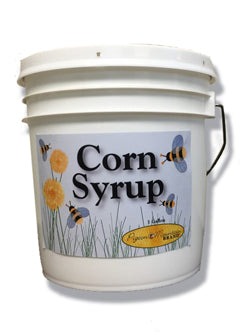
To feed, or not to feed
Raising bees is a lot like raising kids. Everyone has their “own” way, and there are LOTS of opinions out there about what is the “right way” and what is the “wrong way”. But much like raising kids, you have to do what’s best for you and your bees. One of the biggest controversies in the beekeeping world is over feeding. Do you feed or not? If you do, do you use sugar water, corn syrup, or honey? Do you feed all the time, or only when there is no other food source? And in researching this topic, there is...
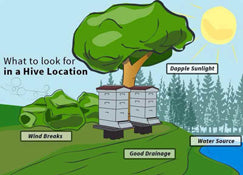
Where to put your hive
Many of you will installing package bees in the next few months. We found this great graphic (courtesy of "Be A Honey and Save the Honey Bee" facebook page) of where to place your hives to best benefit the bees. You want to make sure you have easy access to your hive. Good drainage is important...you don’t want the bees to get wet, and you don’t want to hive to retain water. Clean water is essential. If you don’t have a natural water source, you will need to make sure that you provide plenty of water. A bit of shade...
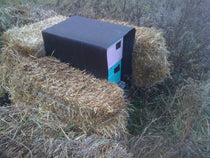
Winterwear for Honey Bees
Fall means that the oppressive heat of summer has finally let up. While we are all glad to enjoy the beautiful fall days, we must remember that winter will be here soon, and your bees will be cold. Therefore, you want to begin making insulation or windbreaks for your hives. These aren’t necessary when the nights are still above 50 degrees. But once the nights start getting colder, you will need them. Just make sure you wrap the hives before the first day of winter.Hay bales make a good, natural windbreak for your hives.The photo shown shows a hive at...
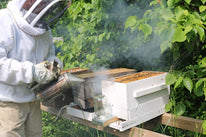
How do I get to the honey?
The honey is capped! The frames are full! It's time to get the honey!!! But what about all those bees in there???Another excellent question! You want to remove the bees from the honey super before you remove the super from your hive, especially if you are taking the super to another location. There are a variety of ways to accomplish this task: smokers, fume products, leaf blowers, bee escapes, and brushes and feathers.Leaf blowers are great, but a bit too loud for the bees. The sound and vibration are upsetting to the bees. The last thing you want, is mad...
